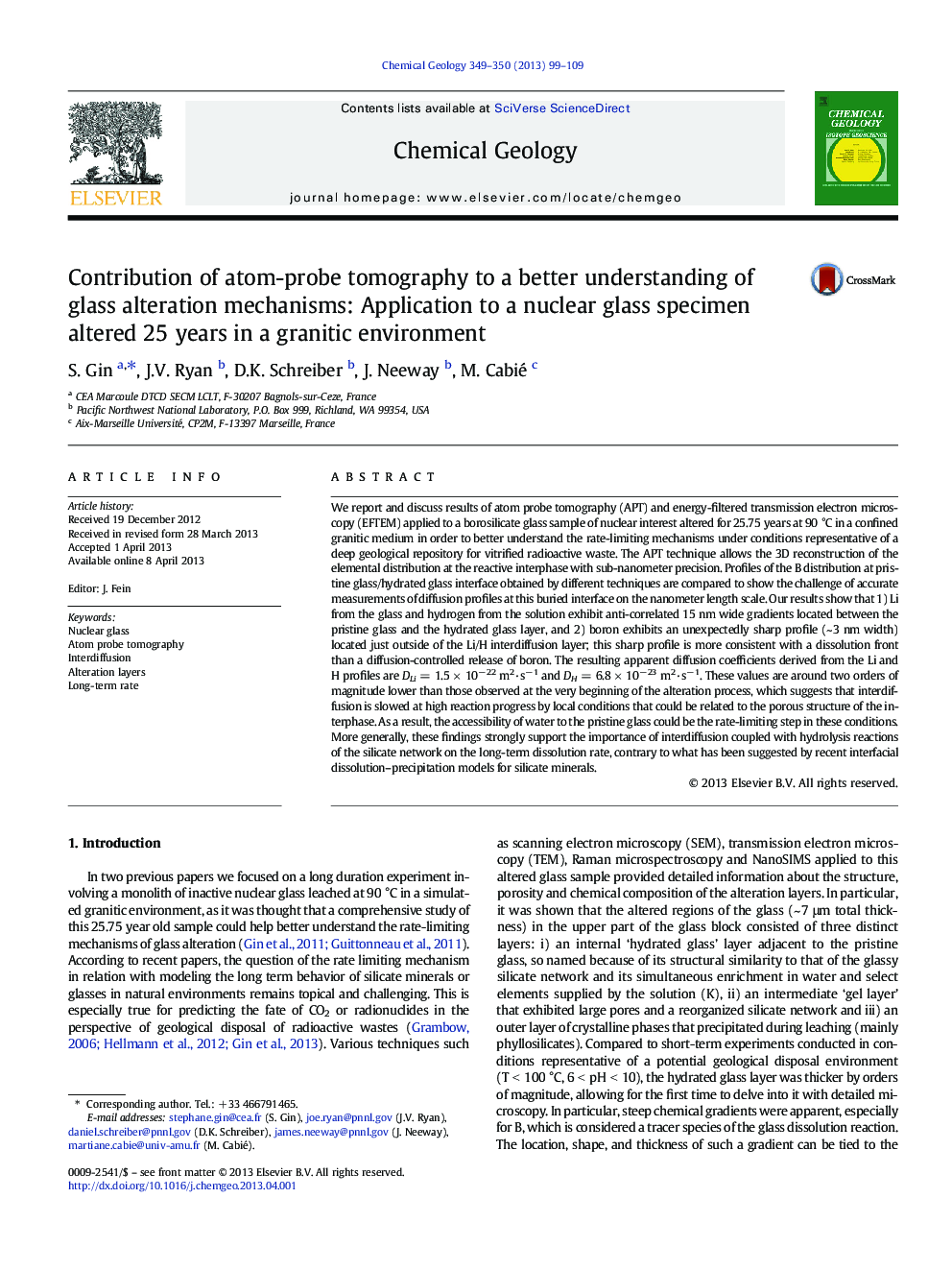| کد مقاله | کد نشریه | سال انتشار | مقاله انگلیسی | نسخه تمام متن |
|---|---|---|---|---|
| 4698954 | 1637619 | 2013 | 11 صفحه PDF | دانلود رایگان |
• Nuclear glass alteration layers are characterized by atom probe tomography.
• The sample results from a 25.75 year long experiment.
• We find two spatially separate reaction fronts and an interdiffusion zone.
• We show that water diffusion is slowed at high reaction progress.
• Findings are discussed in term of rate-limiting mechanisms.
We report and discuss results of atom probe tomography (APT) and energy-filtered transmission electron microscopy (EFTEM) applied to a borosilicate glass sample of nuclear interest altered for 25.75 years at 90 °C in a confined granitic medium in order to better understand the rate-limiting mechanisms under conditions representative of a deep geological repository for vitrified radioactive waste. The APT technique allows the 3D reconstruction of the elemental distribution at the reactive interphase with sub-nanometer precision. Profiles of the B distribution at pristine glass/hydrated glass interface obtained by different techniques are compared to show the challenge of accurate measurements of diffusion profiles at this buried interface on the nanometer length scale. Our results show that 1) Li from the glass and hydrogen from the solution exhibit anti-correlated 15 nm wide gradients located between the pristine glass and the hydrated glass layer, and 2) boron exhibits an unexpectedly sharp profile (~ 3 nm width) located just outside of the Li/H interdiffusion layer; this sharp profile is more consistent with a dissolution front than a diffusion-controlled release of boron. The resulting apparent diffusion coefficients derived from the Li and H profiles are DLi = 1.5 × 10− 22 m2·s− 1 and DH = 6.8 × 10− 23 m2·s− 1. These values are around two orders of magnitude lower than those observed at the very beginning of the alteration process, which suggests that interdiffusion is slowed at high reaction progress by local conditions that could be related to the porous structure of the interphase. As a result, the accessibility of water to the pristine glass could be the rate-limiting step in these conditions. More generally, these findings strongly support the importance of interdiffusion coupled with hydrolysis reactions of the silicate network on the long-term dissolution rate, contrary to what has been suggested by recent interfacial dissolution–precipitation models for silicate minerals.
Journal: Chemical Geology - Volumes 349–350, 26 June 2013, Pages 99–109
